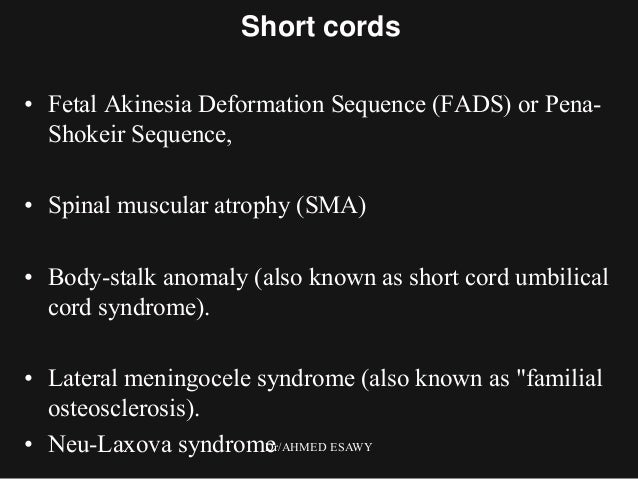
Short Cord Syndrome. It may occur in pregnant women of all ages. Placental abruption and short umbilical cord. Short cord may not only limit fetal movement and its growth inside the womb but it may be associated with fetal distress and various complications during the time of delivery. Short cords are associated with reduced fetal movement or intrauterine constraint as well as placental abruption cord rupture and emergent cesarean deliveries ecds for nonreassuring fetal heart rate nrfhr.

Tethered cord syndrome can be of a congenital primary origin or acquired secondary or developmental. Women who are pregnant with both male and female fetuses can be affected. It may occur in pregnant women of all ages. The most dangerous complication is umbilical cord rupture and severe hemorrhage which can be life threatening for mother as well as for the fetus. The syndrome is more common in people over the age of 50 because osteoarthritis in the neck region causes weakening of the vertebrae. Short cords are associated with reduced fetal movement or intrauterine constraint as well as placental abruption cord rupture and emergent cesarean deliveries ecds for nonreassuring fetal heart rate nrfhr.
Various congenital anomalies particularly spina bifida are often associated with congenital tethered cord syndrome.
Women who are pregnant with both male and female fetuses can be affected. Short cord may not only limit fetal movement and its growth inside the womb but it may be associated with fetal distress and various complications during the time of delivery. Short umbilical cord has been variably defined. Various congenital anomalies particularly spina bifida are often associated with congenital tethered cord syndrome. What are the risk factors for short umbilical cord. It is characterized by loss of motion and sensation in arms and hands.